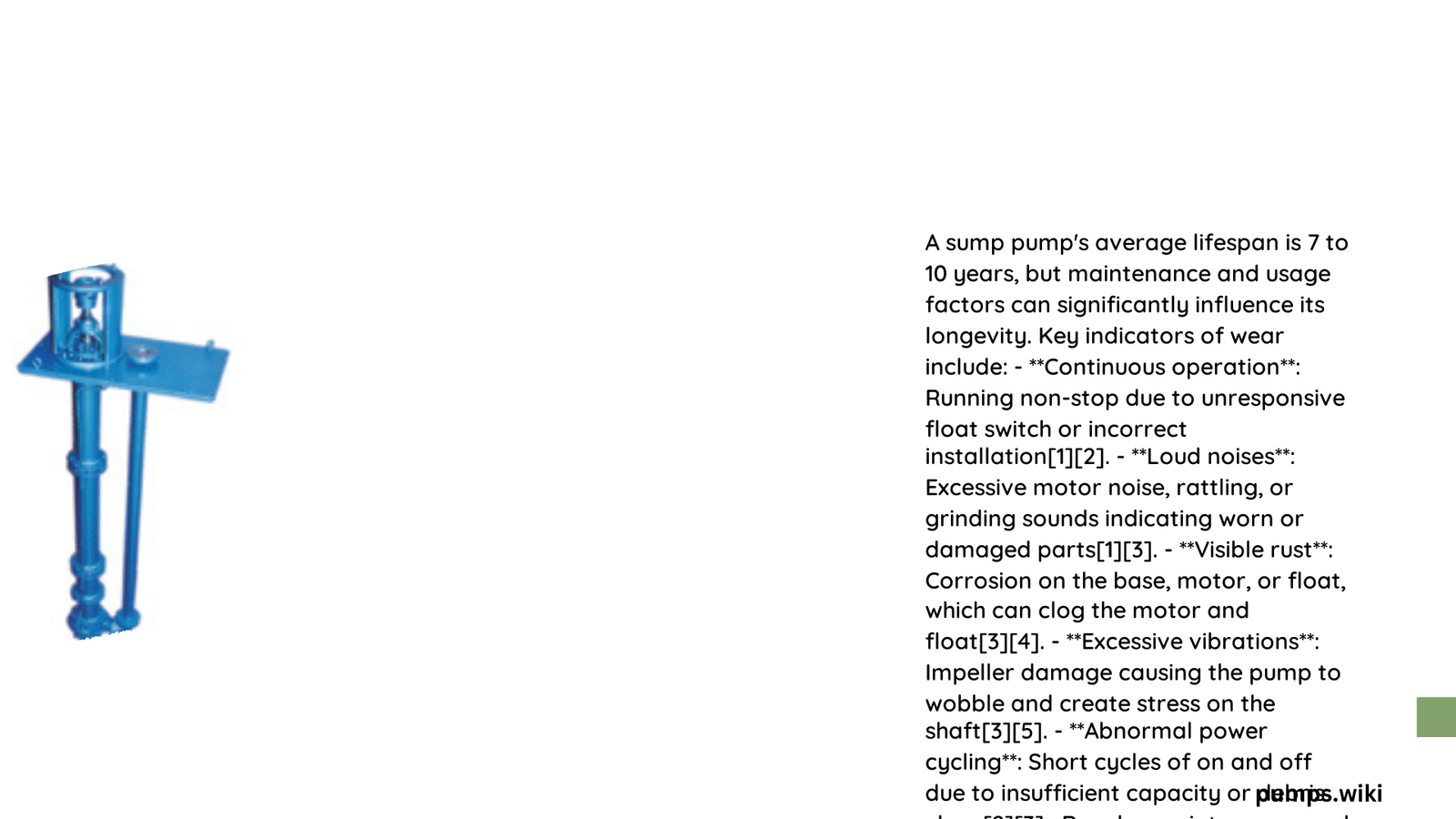The lifespan of a sump pump typically ranges from 7 to 12 years, depending on various factors such as usage frequency, pump type, installation conditions, and environmental factors. Proper maintenance and understanding these influencing elements can significantly extend a sump pump’s operational life. This article delves into the key aspects of sump pump longevity, offering insights on maintenance and factors affecting its lifespan.
What is the Average Lifespan of a Sump Pump?
The average lifespan of a sump pump generally falls between 7 to 12 years. However, this can vary significantly based on several factors:
- Usage frequency
- Pump type
- Installation quality
- Environmental conditions
- Maintenance practices
Usage Frequency
- High usage (constant operation): 5-7 years
- Moderate usage: 7-10 years
- Low usage (occasional operation): 10-12+ years
Pump Type
| Pump Type | Average Lifespan | Characteristics |
|---|---|---|
| Submersible | 5-15 years | Operates underwater, more prone to corrosion |
| Pedestal | Up to 25+ years | Motor above water, less susceptible to corrosion |
What Factors Influence a Sump Pump’s Lifespan?

Several key factors play a role in determining how long a sump pump will last:
-
Installation Conditions: Proper installation is crucial for longevity. A well-installed pump experiences less strain and performs better over time.
-
Material and Build Quality: Pumps made from durable materials like cast iron and stainless steel tend to outlast those made from plastic due to their resistance to corrosion.
-
Environmental Factors: High water tables, proximity to water bodies, and groundwater impurities can significantly impact lifespan by causing more frequent operation and potential corrosion.
-
Maintenance Practices: Regular cleaning, inspection, and timely replacement of worn parts can substantially extend a pump’s lifespan.
How Can You Extend Your Sump Pump’s Lifespan?
To maximize the operational life of your sump pump, consider the following maintenance tips:
- Regular Cleaning:
- Keep the sump pit clear of debris
- Ensure discharge lines are free from blockages
-
Clean the pump and its components regularly
-
Scheduled Inspections:
- Test the pump monthly
-
Perform thorough inspections every 3-6 months
-
Timely Part Replacements:
- Float switches: Replace if showing signs of wear ($20-$50)
-
Check valves: Ensure proper functioning, replace if necessary ($10-$30)
-
Install a Backup System:
- Consider a battery-powered backup pump to reduce strain during power outages or heavy rainfall
What Environmental Conditions Affect Sump Pump Lifespan?
Environmental factors can significantly impact a sump pump’s durability:
- High Groundwater Levels:
- Causes more frequent pump operation
-
Mitigation: Proper pump sizing and larger sump basins
-
Temperature Fluctuations:
- Can affect pump efficiency and material integrity
-
Mitigation: Use temperature-resistant materials, regular maintenance
-
Water Impurities:
- Substances like iron ochre can build up in the pump mechanism
- Mitigation: Regular cleaning, pre-treatment systems or filters
What is a Recommended Maintenance Schedule for Sump Pumps?
To ensure optimal performance and longevity, follow this maintenance schedule:
Monthly Tasks:
- Test the pump’s operation
- Check for visible signs of corrosion or damage
Quarterly Tasks:
- Inspect and clean discharge lines
- Check float switch and other components for wear
Annual Tasks:
- Thoroughly clean the sump pit and pump
- Inspect all system components
- Replace worn parts as needed
By adhering to these maintenance practices and understanding the factors influencing your sump pump’s lifespan, you can significantly extend its operational life and ensure reliable performance when you need it most.
